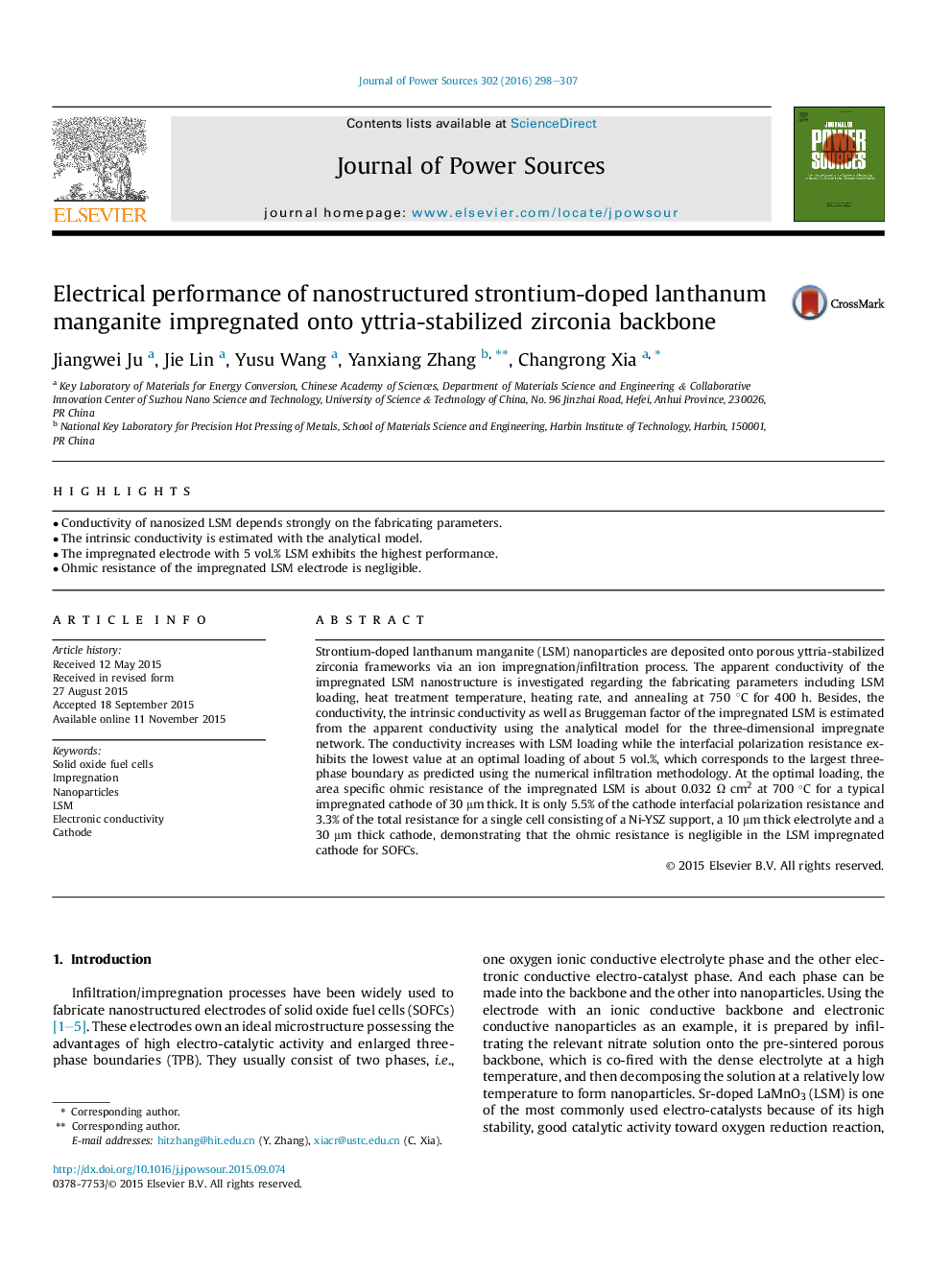| Article ID | Journal | Published Year | Pages | File Type |
|---|---|---|---|---|
| 7729776 | Journal of Power Sources | 2016 | 10 Pages |
Abstract
Strontium-doped lanthanum manganite (LSM) nanoparticles are deposited onto porous yttria-stabilized zirconia frameworks via an ion impregnation/infiltration process. The apparent conductivity of the impregnated LSM nanostructure is investigated regarding the fabricating parameters including LSM loading, heat treatment temperature, heating rate, and annealing at 750 °C for 400 h. Besides, the conductivity, the intrinsic conductivity as well as Bruggeman factor of the impregnated LSM is estimated from the apparent conductivity using the analytical model for the three-dimensional impregnate network. The conductivity increases with LSM loading while the interfacial polarization resistance exhibits the lowest value at an optimal loading of about 5 vol.%, which corresponds to the largest three-phase boundary as predicted using the numerical infiltration methodology. At the optimal loading, the area specific ohmic resistance of the impregnated LSM is about 0.032 Ω cm2 at 700 °C for a typical impregnated cathode of 30 μm thick. It is only 5.5% of the cathode interfacial polarization resistance and 3.3% of the total resistance for a single cell consisting of a Ni-YSZ support, a 10 μm thick electrolyte and a 30 μm thick cathode, demonstrating that the ohmic resistance is negligible in the LSM impregnated cathode for SOFCs.
Related Topics
Physical Sciences and Engineering
Chemistry
Electrochemistry
Authors
Jiangwei Ju, Jie Lin, Yusu Wang, Yanxiang Zhang, Changrong Xia,
